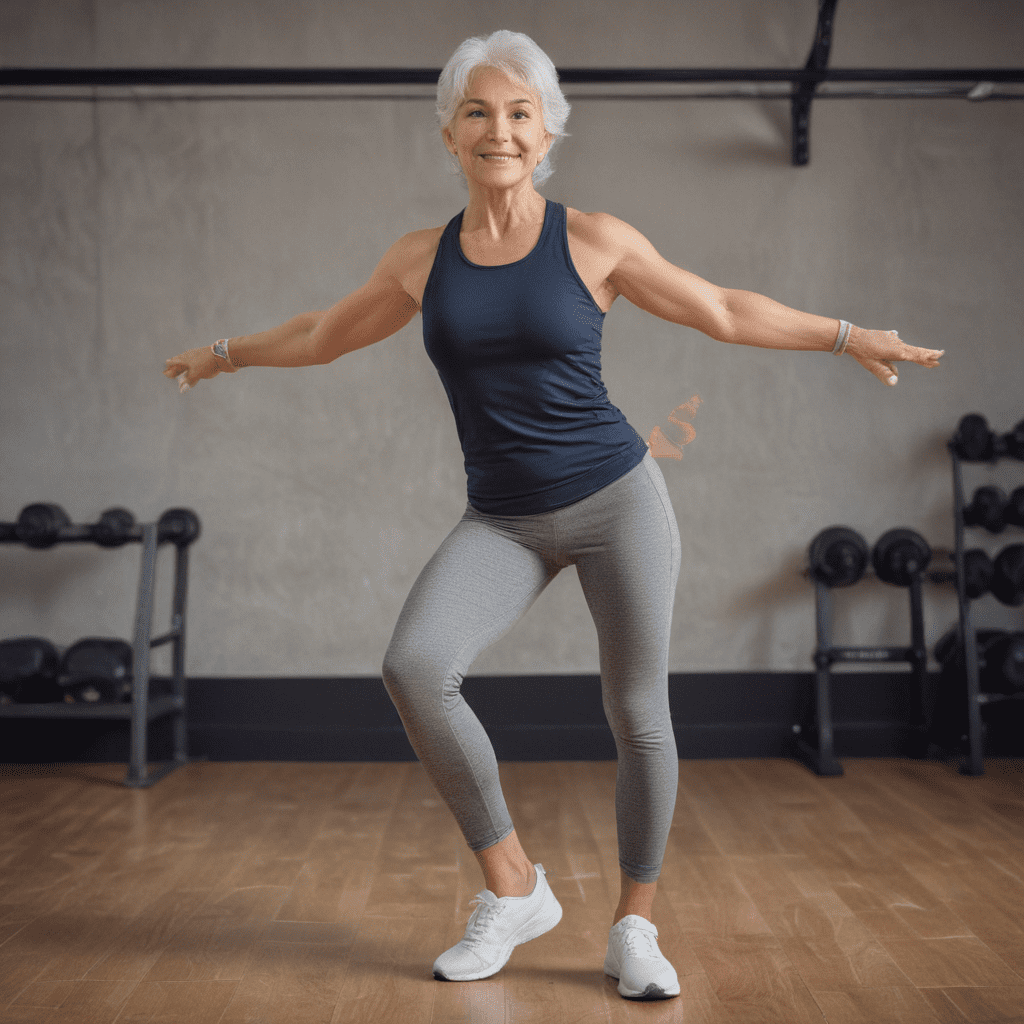
Benefits of Exercise Flexibility for Seniors: Improve Range of Motion
As we age, it is essential to maintain our flexibility to continue living active and independent lives. Exercise flexibility offers numerous benefits for seniors, including improved range of motion.
1. Benefits of Exercise Flexibility
Exercise flexibility helps to improve the range of motion around joints, making it easier to perform everyday activities such as reaching, bending, and twisting. It also helps to prevent muscle soreness, stiffness, and pain.
2. Improves Range of Motion
One of the primary benefits of exercise flexibility is that it improves the range of motion around joints. Regular stretching exercises can help to increase the length and elasticity of muscles, allowing for greater movement and flexibility. This is especially important for seniors, as decreased range of motion can limit mobility and increase the risk of falls.
3. Reduces Pain and Stiffness
Exercise flexibility can also help to reduce pain and stiffness in joints and muscles. When muscles are tight and inflexible, they can put pressure on joints, causing pain and discomfort. Stretching exercises help to relax muscles and improve circulation, which can reduce pain and stiffness.
4. Enhances Balance and Coordination
Exercise flexibility can also help to enhance balance and coordination. By improving the range of motion around joints, seniors can move more easily and confidently. This can help to reduce the risk of falls and improve overall stability.
5. Improves Posture
Good posture is important for maintaining balance and preventing pain. Exercise flexibility can help to improve posture by strengthening the muscles that support the spine. When these muscles are strong, they can help to keep the spine in alignment and reduce the risk of back pain and other postural problems.
6. Reduces Risk of Falls
Exercise flexibility can also help to reduce the risk of falls among seniors. When muscles are flexible, they are less likely to be injured during a fall. Additionally, improved balance and coordination can help to prevent falls from occurring in the first place.
7. Promotes Relaxation and Stress Relief
Exercise flexibility can also promote relaxation and stress relief. Stretching exercises can help to reduce tension in muscles and joints, which can lead to a feeling of relaxation and well-being. Additionally, exercise flexibility can help to improve sleep quality, which is essential for overall health and well-being.
8. Improves Mood and Cognitive Function
Exercise flexibility can also improve mood and cognitive function. Stretching exercises can help to release endorphins, which have mood-boosting effects. Additionally, improved flexibility can help to increase blood flow to the brain, which can improve cognitive function and reduce the risk of dementia.
9. Increases Energy Levels
Exercise flexibility can also help to increase energy levels. When muscles are flexible, they can work more efficiently, which can lead to increased energy levels throughout the day. Additionally, improved flexibility can help to improve circulation, which can also contribute to increased energy levels.
10. Conclusion: The Importance of Flexibility for Seniors
Exercise flexibility is an essential component of maintaining a healthy and active lifestyle for seniors. By improving range of motion, reducing pain and stiffness, and enhancing balance and coordination, exercise flexibility can help seniors to continue living active and independent lives.
FAQs
Q: What are some examples of flexibility exercises for seniors?
- Shoulder rolls: Roll your shoulders in a circular motion, 10 times forward and 10 times backward.
- Arm circles: Make small circles with your arms, 10 times clockwise and 10 times counter-clockwise.
- Torso twists: Sit on a chair and twist your torso from side to side, holding each twist for 10 seconds.
- Leg swings: Stand facing a chair and swing your right leg forward and backward, then repeat with your left leg. Do 10 swings for each leg.
- Hamstring stretch: Stand with your feet shoulder-width apart and bend over at the waist, reaching towards your toes. Hold this stretch for 30 seconds.
Q: How often should I do flexibility exercises?
- Aim for at least 10 minutes of flexibility exercises twice a week.
Q: What are the risks of not doing enough flexibility exercises?
- Decreased range of motion
- Increased pain and stiffness
- Poor balance and coordination
- Increased risk of falls
- Poor posture


